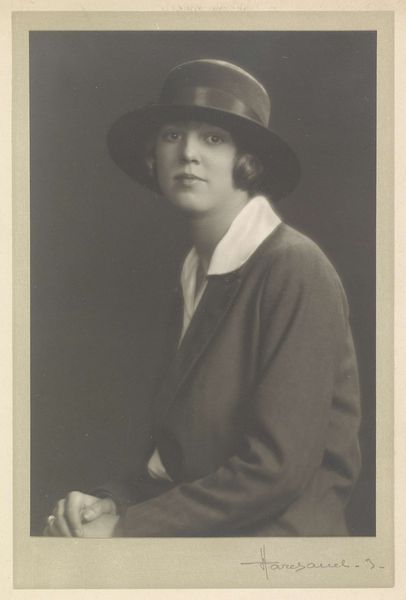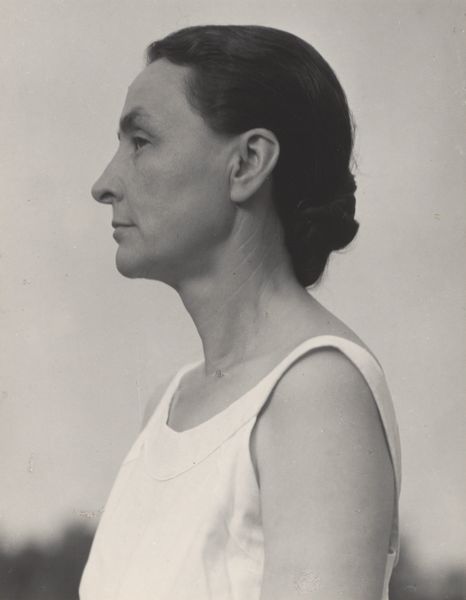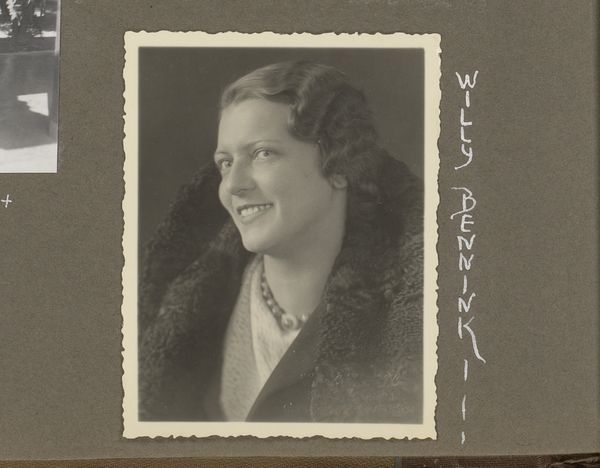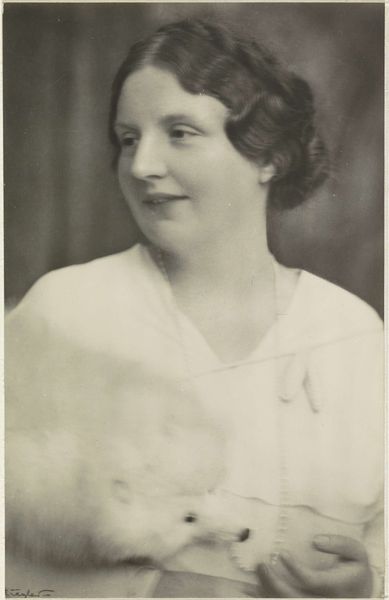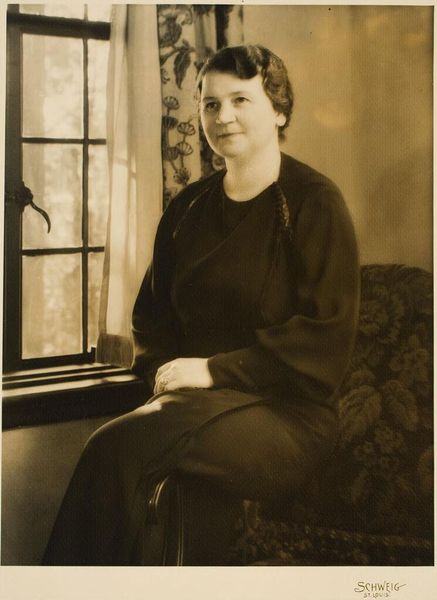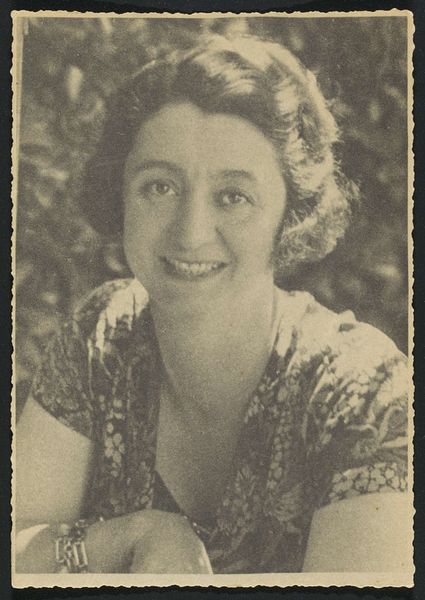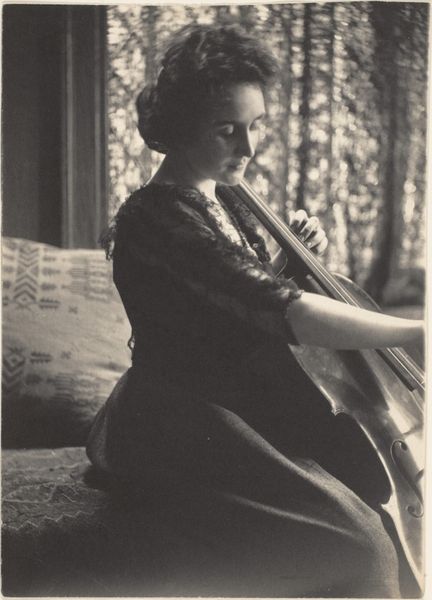
photography, gelatin-silver-print
#
portrait
#
self-portrait
#
pictorialism
#
archive photography
#
photography
#
historical photography
#
single portrait
#
gelatin-silver-print
#
modernism
Dimensions: image: 23.3 × 19.2 cm (9 3/16 × 7 9/16 in.) sheet: 25 × 20.2 cm (9 13/16 × 7 15/16 in.) mat: 50.8 × 38.2 cm (20 × 15 1/16 in.)
Copyright: National Gallery of Art: CC0 1.0
Curator: Before us, we have Alfred Stieglitz's "Kitty Stieglitz," a gelatin-silver print made between 1915 and 1917. It is a compelling portrait that demonstrates the pictorialist aesthetic. What strikes you first about it? Editor: Immediately, I’m caught by her gaze—so direct and self-assured, almost challenging. The light softens everything, though; it's as if she's emerging from a dream, pen in hand. There's a wistful, lyrical feel to it. Curator: Precisely. Stieglitz's mastery in controlling light and shadow, a hallmark of pictorialism, is quite evident here. Observe how the soft focus and the sepia tones create a sense of timelessness, elevating the photograph beyond a mere recording to a work imbued with mood. Editor: It's not just mood; it hints at a story. Who is this woman? What is she writing? I find myself inventing narratives for her, maybe about a lover or some grand secret. She feels incredibly alive. Curator: It is indeed the artist's wife, Katherine, nicknamed "Kitty." Stieglitz used photography as a form of exploration of his subjects, focusing intently on those close to him, allowing their personality and his relationship to them to seep into the final print. Editor: Knowing it’s his wife makes it even more intense. You sense the intimacy. I see not just Kitty but Stieglitz's idea of her, his artistic rendering. And that uniform-like top… very practical and no-nonsense. Curator: Absolutely. Consider also the structural elements. The framing and pose of the sitter are calculated to focus on the expressive capacity of her face, employing compositional techniques that would normally be reserved for paintings. This deliberate arrangement highlights Stieglitz's intentions to define photography as an artform. Editor: Yes, but without losing the raw authenticity that photography seizes so well. I like that the soft focus creates this halo effect of nostalgia without ever feeling contrived or sentimental. It’s controlled but deeply affecting. Curator: Indeed. The photograph provides a subtle yet powerful commentary on the artistic ambitions of photography as a modernist art form, pushing the boundaries of how we consider its emotional resonance. Editor: Well, that's certainly given me something to ponder; beyond technique, there's also real heart. It leaves me seeing portrait photography anew.
Comments
No comments
Be the first to comment and join the conversation on the ultimate creative platform.
